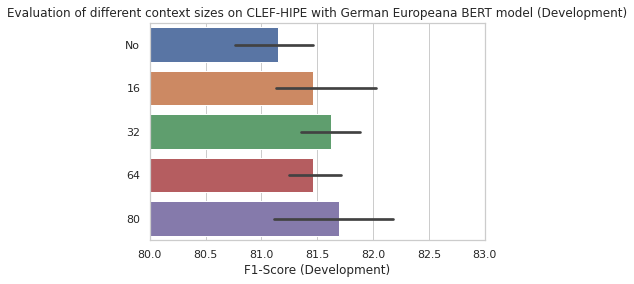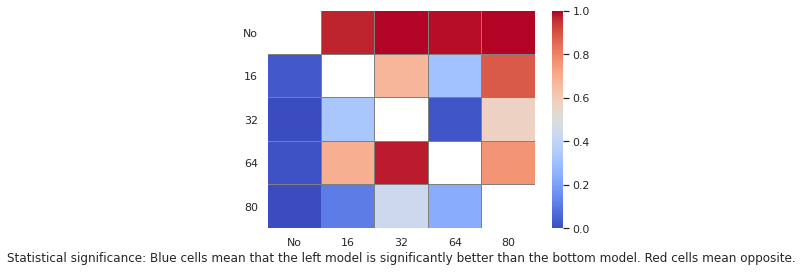Triple E - Effective Ensembling of Embeddings and Language Models for NER of Historical German
Based on our paper we release a new baseline model for the German CLEF-HIPE shared task.
In contrast to the models used in the paper, we manually sentence-segmented and normalize hyphenations and trained a NER model using the German Europeana BERT model.
Additionally, we perform experiments with different context sizes. This approach is described in more detail in this paper.
Results
The results with different context sizes can be seen in the following table:
| Model | Run 1 | Run 2 | Run 3 | Run 4 | Run 5 | Avg. |
|---|---|---|---|---|---|---|
| German Europeana BERT | (81.45) / 76.92 | (81.53) / 77.03 | (80.49) / 77.83 | (80.88) / 77.19 | (81.39) / 77.00 | (81.15 ± 0.45) / 77.19 ± 0.34 |
| German Europeana BERT (16) | (82.56) / 77.38 | (81.19) / 77.76 | (80.99) / 76.34 | (81.27) / 77.70 | (81.28) / 77.22 | (81.46 ± 0.63) / 77.28 ± 0.57 |
| German Europeana BERT (32) | (82.04) / 78.50 | (81.14) / 76.56 | (81.81) / 78.28 | (81.50) / 76.90 | (81.64) / 77.94 | (81.63 ± 0.34) / 77.64 ± 0.86 |
| German Europeana BERT (64) | (81.21) / 78.39 | (81.27) / 75.98 | (81.88) / 78.40 | (81.66) / 77.35 | (81.29) / 76.70 | (81.46 ± 0.29) / 77.36 ± 1.06 |
| German Europeana BERT (80) | (82.13) / 77.77 | (81.31) / 76.81 | (82.09) / 78.69 | (82.30) / 76.79 | (80.65) / 77.10 | (81.70 ± 0.70) / 77.43 ± 0.81 |
For model upload, we choose the best model on development score: 82.56 with a context length of 16.
Comparisons
The following figure shows the results with different context sized (on development dataset):
We perform "Almost Stochastic Order" tests as proposed in the "Deep Dominance - How to Properly Compare Deep Neural Models" paper. The heatmap figure is heavily inspired by the "CharacterBERT" paper.
- Downloads last month
- 10

